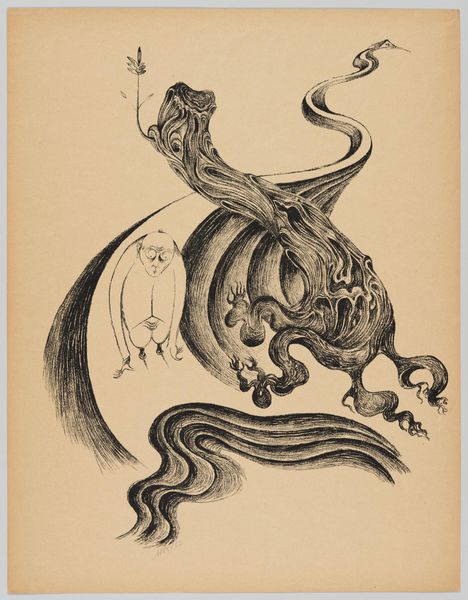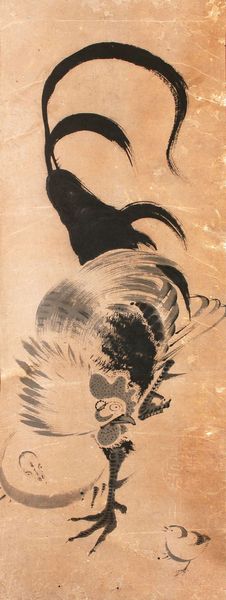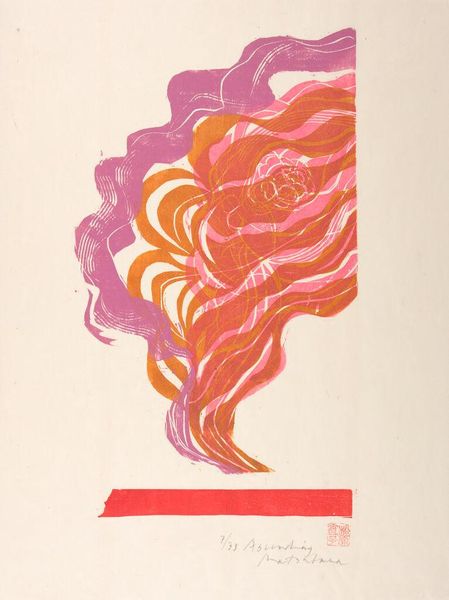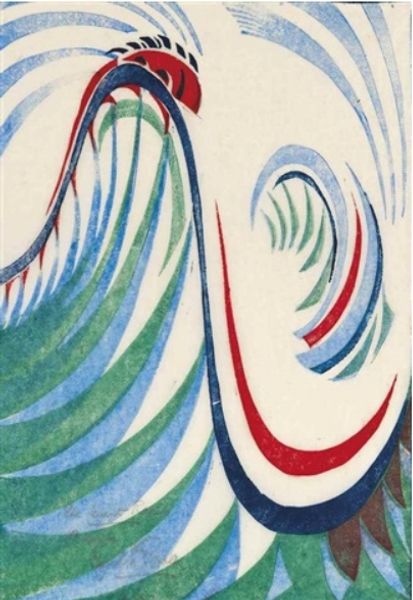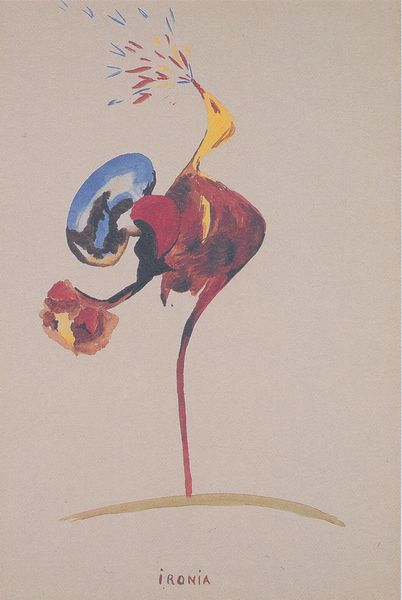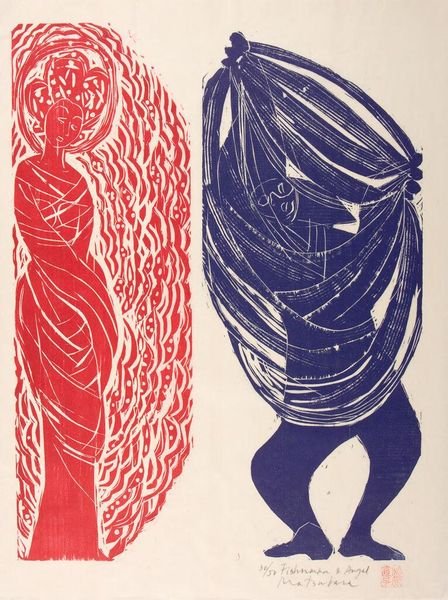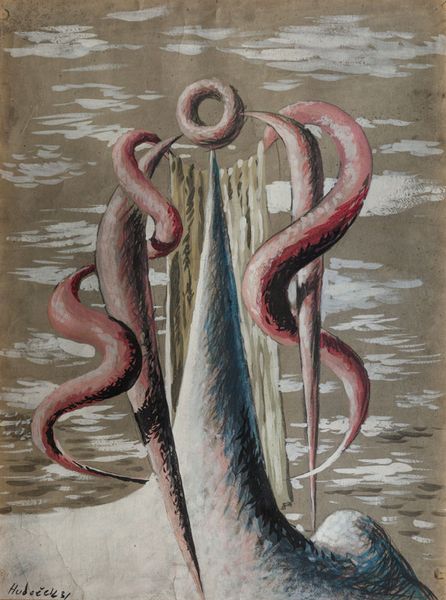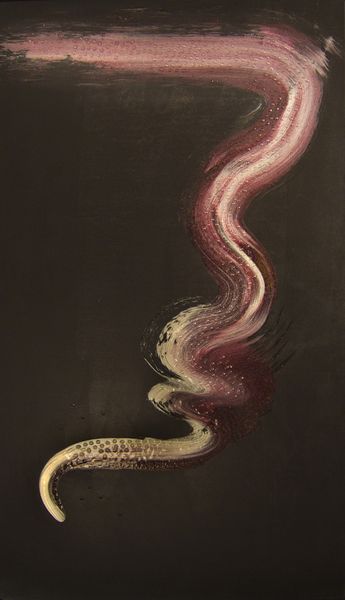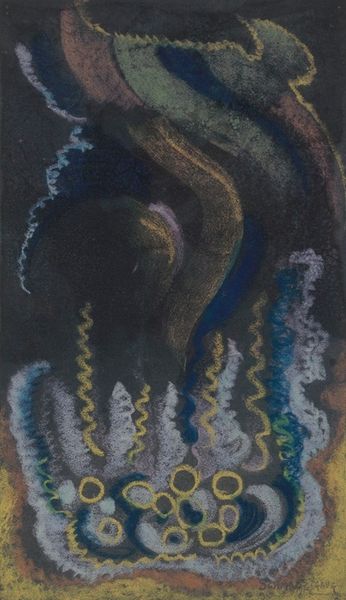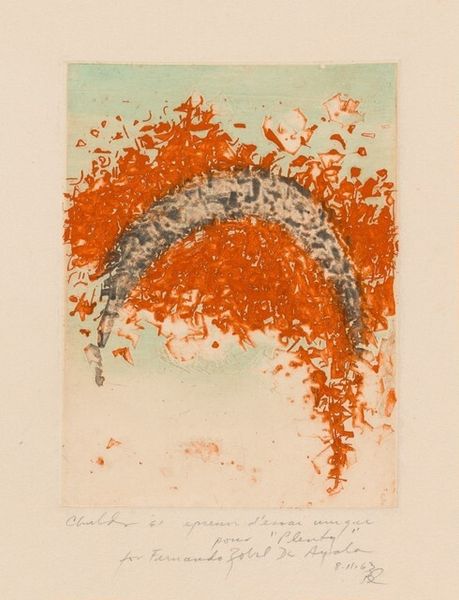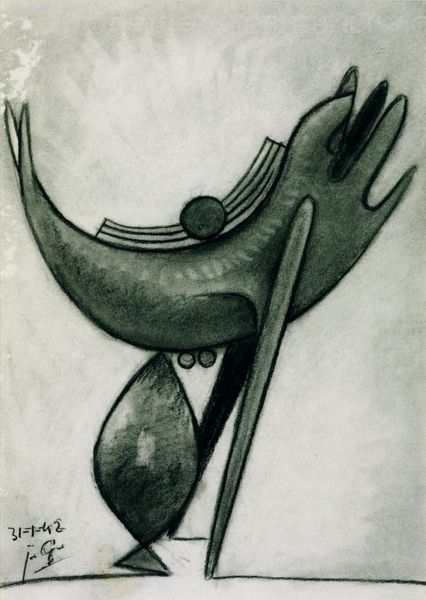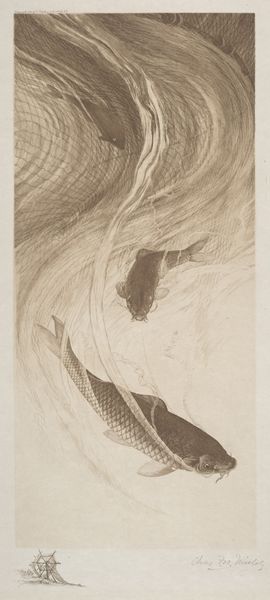
Copyright: The Galleries at Moore. La Futurista: Benedetta Cappa Marinetti. Edited by Elsa Longhauser. Philadelphia, PA: Moore College of Art and Design, 1998. Exhibition catalogue. The Solomon R. Guggenheim Museum. Italian Futurism 1909 - 1944: Reconstructing the Universe. Edited by Vivian Greene. New York, NY: Guggenheim Museum Publications, 2014. Exhibition catalogue.
Curator: This watercolour by Benedetta Cappa, created around 1930, is entitled "Lo Spirito." What strikes you first about it? Editor: The dynamic use of red—it's almost violent in its intensity. And the lines create this incredible sense of upward movement, even a kind of sonic boom effect emanating upwards. Curator: Cappa, as a futurist artist, was very interested in representing energy, movement and the sensations of modern life. As a woman artist in this period she broke the rules of a patriarchal and conservative society to become one of the very few female voices recognised within this radical movement. Editor: You can definitely sense that radicalism in the composition. The dominance of diagonals, for instance, gives it a propulsive visual force. It seems to vibrate with potential energy, and has an internal structural logic which reinforces that upward dynamic. The arrow is powerful, cutting and fierce! Curator: Yes, this abstract language seeks to visually depict the spiritual and the emotional power of transformation that futurism wanted to invoke. In many ways the artist's vision, particularly in the light of her experience in life, also became synonymous with resilience, change and strength in the face of adversities. Editor: It makes you wonder what kind of semiotic coding, apart from the aesthetic drive, has this artist poured into the upward trajectory that this watercolor conveys so powerfully. Curator: Indeed. In the 1930s, the rise of totalitarian regimes cast a long shadow across Europe. In this sense "Lo Spirito" takes a symbolic role—perhaps suggesting individual freedom trying to explode despite the increasing limitations to people's freedom being posed by conservative powers at the time. Editor: I hadn't considered it in light of those tensions, but the single-minded, assertive direction feels even more poignant knowing that historical context. Curator: Absolutely. Examining this work offers us insights into the formal qualities and how the context deeply charged it with sociopolitical commentary. Editor: So true, viewing this powerful composition offers a window into the convergence of radical formalism with a period of monumental social and political transformations.
Comments
No comments
Be the first to comment and join the conversation on the ultimate creative platform.
